Business
Chilli farming under CPEC to expand over 5000 acres in Pakistan
Published
4 years agoon
By
Editor
ISLAMABAD, Jul 18 (APP): After a successful pilot project at 100 acres under China Pakistan Economic Corridor (CPEC), the next phase of Chilli farming will be ready for launch with upcoming sowing.
Referring to an article published by China Economic Net, Chairman CPEC Authority
Lt Gen (Retd) Asim Saleem Bajwa on Sunday in a tweet said, the Chilli farming could spread over an area of 5000 acres in various regions of the country.
After successful pilot project at 100 acres (impressive results), Next phase of Chilli farming will be ready for launch with upcoming sowing. Could expand to 5,000 acres spread over different regions. Results in this article; https://t.co/wNZjq5ZGXz pic.twitter.com/ngCWThaCLy
— Asim Saleem Bajwa (@AsimSBajwa) July 18, 2021
According to the article of China Economic Net, Pakistan has ideal conditions for Chilli/Pepper (Capsicum Annum L.) cultivation. Pakistan is amongst the top ten chilli producing nations which enjoy a combination of warm, humid yet dry weather and a
well-drained sandy loam with rich organic content.
However, Pakistan’s chilli production has been lower than the world average for the same period since 2015. From FY2014–15 to FY2017-18, the average annual production of chilli in Pakistan was around 143,428 tons, but it plummeted to 126,943 tons in FY2018-19, accounting for 85.7% its peak in FY2017-18 of 148,114 tons.
In Pakistan, Sindh province is the major producer of chilli followed by Punjab and Balochistan. The major constraints in production faced by chilli farmers here are lack of modern irrigation system, imbalance use of fertilizer and pesticide, and lack of training.
“In Pakistan old methods of 1970s, 1960s or 1980s are adopted by farmers. Now Pakistan has to adopt modern technology to increase its production,” recommended Zahid Gishkori, a Special Investigative Correspondent in Pakistan.
What is worse, growers are troubled by some marketing issues, including unreasonable commission agent charges, improper weighing, price fluctuations and lack of proper storage facilities. Pepper growers are unable to make a proper profit from chilli due to marketing channel barriers.
Talking to China Economic Net, Khurum Javed Maqbool, Director Marketing of Fatima AG Soultions Limited, Pakistan, pointed out that at present the whole ecosystem in Pakistan is inefficient.
“From harvesting to sewing and storing of the crop and then selling it and then farmers getting financing and then the returns for their produce… All these operations require improvement.”
In July, a pilot Chilli farm project under the cooperation between Pakistani farmers and their Chinese partners – CMEC & Sichuan Litong Food Group – began to bear fruit, with a yield around 3 times Pakistani varieties.
Chen Changwei, Chairman of Sichuan Litong Food Group, China, noted that their pilot Chilli farm project successfully completed 100 acres of plantation in the first half of 2021 in Lahore.
For the 100-acre-pilot-project, the quantities of seeds are 380 grams per acre, with a yield reaching 3 tons per acre. The total production is expected to reach 300 tons.
While as per Ministry of National Food Security & Research (Economic Wing), chilli is grown on 47,349 hectares in Pakistan with a crop yield of about 2.68 tons per hectare (1.072 tons per acre) and an annual production of around 126,943 tons in FY2018-19.
As per Chen, they brought a total of 13 varieties of Chinese chillies to Pakistan since 2019. It took them three years to conduct the pilot program, and of all these 13 varieties, two varieties, namely, PJH-302 and PJH-407, have been certified for cultivation in Pakistan.
“Seed is the basic input for agriculture sector and has imperative role in enhancing agriculture productivity, food security and poverty alleviation,” said YEAR BOOK 2019-20 released by Ministry of National Food Security and Research (NFS&R), Pakistan.
On top of seeds, field management is also of great significance. Correct and careful management of farming and farmers could increase efficiency and reduce risk.
“We’re gonna arrange a team of 3 agricultural experts on each chilli field of around 0.165 acres,” Wu Guang told China Economic Net. And these agricultural experts will train Pakistani staff in planting technology.
Advanced Chinese irrigation systems have also been introduced into the field. Umer Diyal, a farmer who worked in the pilot Chilli farm in Qasbi, Lahore, said the Chinese introduced an irrigation system, and the expense of fertilizer has been reduced and every plant was getting water. “Watering of plants is not complex and expensive any more,” he added.
Also, contract farming helps a lot when it comes to addressing farmers’ concerns about marketing.
Agriculture-related economy is vulnerable, so “we’re conducting contract farming with Pakistani farmers,” Wu Guang told China Economic Net.
That is, Pakistani farmers undertake to supply agreed quantities of chilli, based on the quality standards and delivery requirements of CMEC. In return, CMEC agrees to buy the chilli, at a price that is nailed down in advance.
“When the chillies are ripe, they are naturally dried and then shipped back to China for further processing,” Chen Changwei noted.
“If there is a farmer, who has harvested 100 acres of chilli crops in Nawabshah, Sindh, his profits from the local markets would be low. About 70% of the households in Pakistan grow on their own, so they wish to export the chilli to other countries,” Zahid Gishkori said, hinting that contract farming might be a feasible way for them to “export” at doorstep during the pandemic period.
“This model generates employment in the rural economy, reduces risk for firms, and provides income for farmers,” Wu Guang told China Economic Net. He further mentioned that in the next phase of the pilot Chilli farm project, as many as 3000 acres of land would be brought under chilli cultivation.
Chinese Ambassador to Pakistan Nong Rong praised the chilli farming project, saying that the project is expected to produce more than 8,000 tons of dried chillies with a net income of more than Rs. 100,000 per acre for local farmers.
Lastly, Pakistan has another advantage over China in growing chillies. Sequential cropping is feasible here as the climate, soil, and water of Pakistan are different from that of China.
Chilli is a tropical and sub-tropical plant which requires warmer weather.
Chen Changwei noted, the largest planting area of chilli in China is its northern part, which turns cold after September, so mostly chilli can only be planted for one season in China.
While in Pakistan, “we can complete two seasons of planting as long as we avoid high temperatures from mid-June to August.”
“Our ultimate goal is to cooperate with our Pakistani friends on 200, 000 acres of land here,” Chen Changwei said determinedly.
Based on the planting, they will further develop downstream deep processing industries and create more employment opportunities in the future.
Wu Guang and Chen Changwei further shared with the reporter their three-step strategy.
Chen noted that in the first phase of Chilli Contract Farming Project, China-Pakistan Agricultural Cooperation Pilot Zone is to be set up in five years, forming an industrial belt from areas around Faisalabad, Multan, KPK and Lahore.
The second step is processing. A chilli processing plant will be established in Pakistan within three years to extract chilli pigment and chilli essence, with an industrial output value of USD 200 million.
While in the third phase, a China-Pakistan food industrial park would be established in 5 to 10 years to help Pakistan boost processed chilli exports in days to come. Wu explained, chilli is only the beginning and they are to plant more crops like garlic in Pakistan in days to come, so as to form a complete industrial chain to deep process raw material close by.
“Many Chinese enjoy chilli sauce that is made of chilli, beans, garlic and so on, and it would be easier and economical to export deep-processed chilli products like bottled chilli sauce than raw material,” Wu said.
“As the Chinese technical researchers are involved in it we are sure the project has high prospects,” Dr Muhammad Azeem Khan, Chairman of Pakistan Agricultural Research Council (PARC) told CEN reporter, adding that the processed chilli will be exported from Pakistan, generating revenue from foreign markets and upgrading industrial structure in Pakistan.
As China became the world’s leading chilli and pepper consuming country, there is ample room for Pak-China cooperation. According to statistics released by General Administration of Customs of China, China imported 49,800 tons of chilli worth USD 34.002 million in 2020.
However, China did not import any chilli or chilli products from Pakistan in 2020. And for the last five years, China has only imported limited processed chilli products from Pakistan worth USD 4,099 in 2018-2019.
Despite its low export volume, Pakistan’s chilli has been well received in China. On Daraz, the leading online marketplace in South Asia, it takes you Rs. 398 to buy one Red Chilli Powder weighed 110g.
But when you search for Pakistani chilli on JD.com, a Chinese e-commerce giant, you could find the same Red Chilli Powder exported from Pakistan. It costs you RMB 33.6 (˜Rs. 820) to buy one in China, which is twice the original price in Pakistan.
“This red chilli powder is incredible! For curry cooking authentic spices counts a lot,” a Chinese netizen posted a comment for it.
“At present, Pakistani pepper has a limited market share in China. But we are very confident that we can achieve a yield from hundreds of tons to tens of thousands of tons as the Pak-China project on chilli succeeded!” Wu Guang expressed his confidence in Pakistani chilli’s future market share in China.
You may like
Business
Pakistan produced an incredible variety of ‘King of Fruits’
Fariyal Mir
Published
12 months agoon
May 28, 2024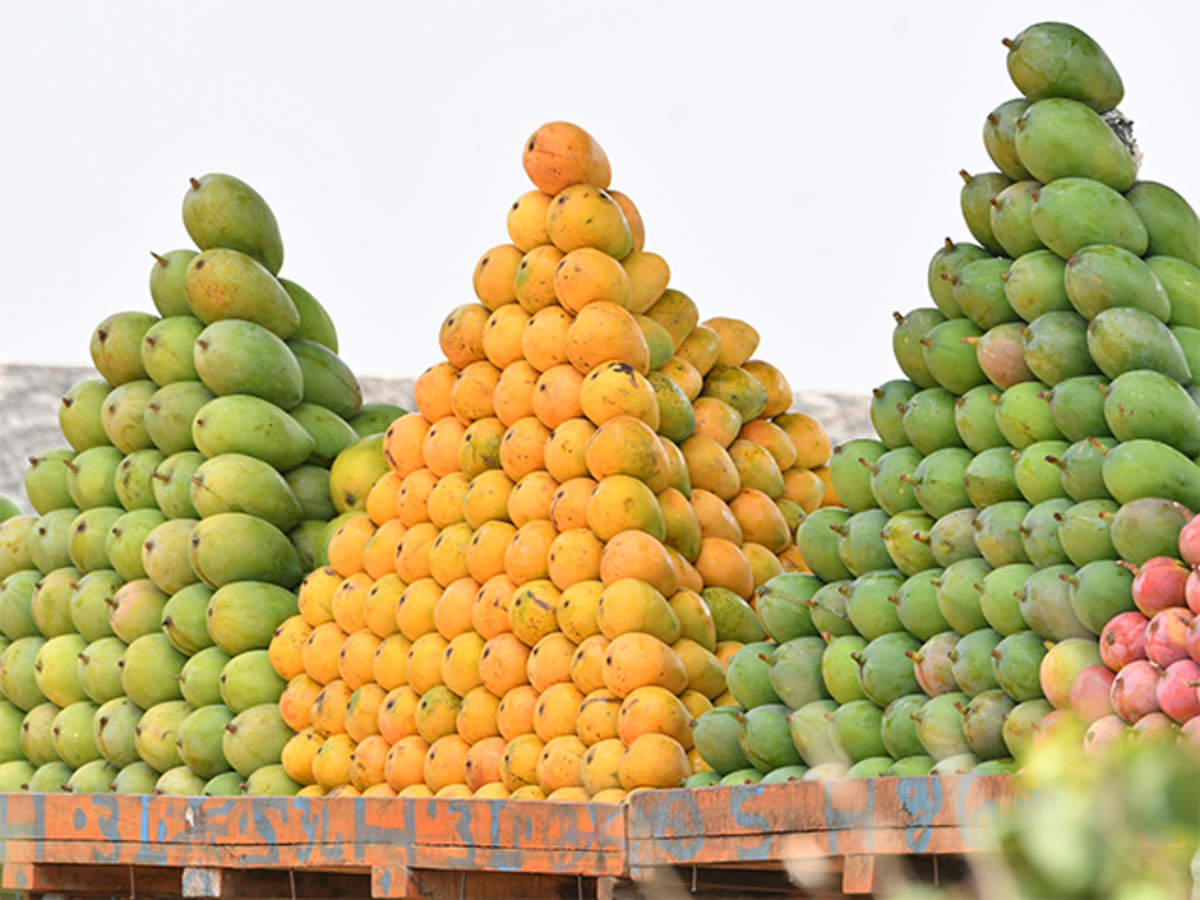
The fertile land of Pakistan produces an extensive number of Mangoes which is better called as ‘King of Fruit’. Pakistan exports Mangoes from corner to corner of the world. Mangoes are not just nationwide but worldwide favorite fruits. This tasty and nutritional fruit reaches the market in May and disappears till the last of September. Though Mangoes are grown in more than 90 nation-states yet Pakistan stands as the fourth number in the production of Mangoes. Moreover presently Pakistan produces more than 1.5 million tons of mangoes about which more than 5% is exported.
Surprisingly, there are more than 1200 kinds of mangoes in Pakistan but we know a few of them. Whereas, around 30 to 35 kinds of mangoes are produced on a profitable scale. Mangoes are the most awaited fruits and people wait passionately for summer to have the taste of the ‘King of Fruits’.
As I have mentioned that there is an abundant number of mangoes kind but here we will discuss a few of them. Some of the most famous and tasty variety of mangoes are given below:
SINDHRI
This variety of mango is highly produced in Sindh. It is oval in shape, large in size, and lemon yellow. It tastes sweet and smells pleasant.

CHAUNSA
Chaunsa is the best variety of mango produced by Pakistan. It is the most mouth-watering type of mango which is delightful and full of juice. It also contains merely the smallest of fiber. This variety is out in the market in the summer.
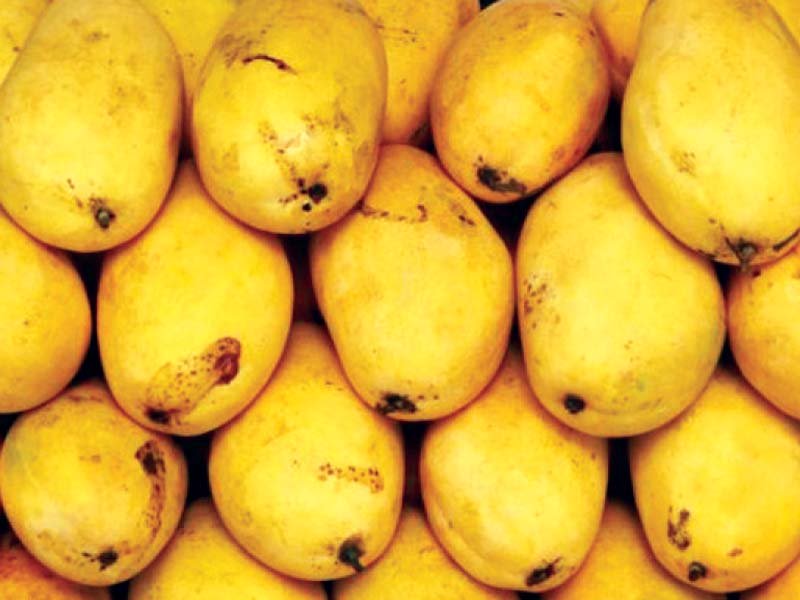
RED KIND ALSO KNOWN AS LAL BADSHAH
This variety of mango is the unique one. It is assumed to be a creamy mango with a small red color. It has an asymmetrical figure with moderately fixed skin.
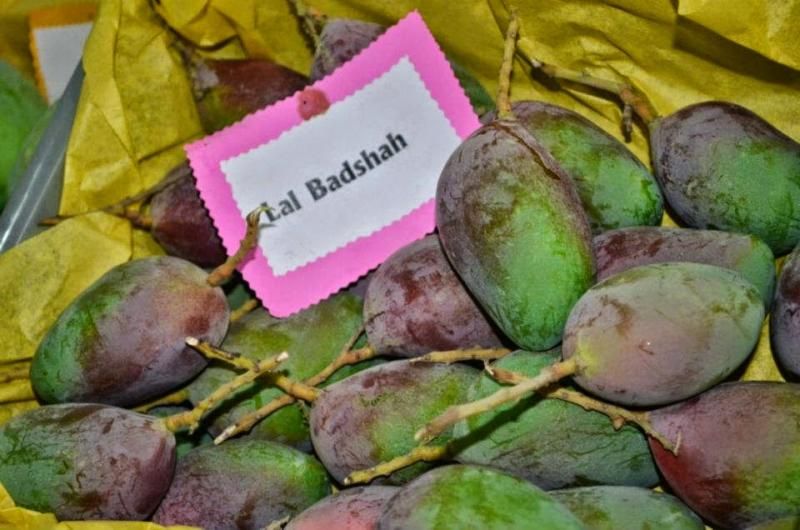
ANWAR RATOL
Anwar Ratol is another mouthwatering variety of mangoes that arrives on the market from July to August. This kind of mango is best for making ice cream.
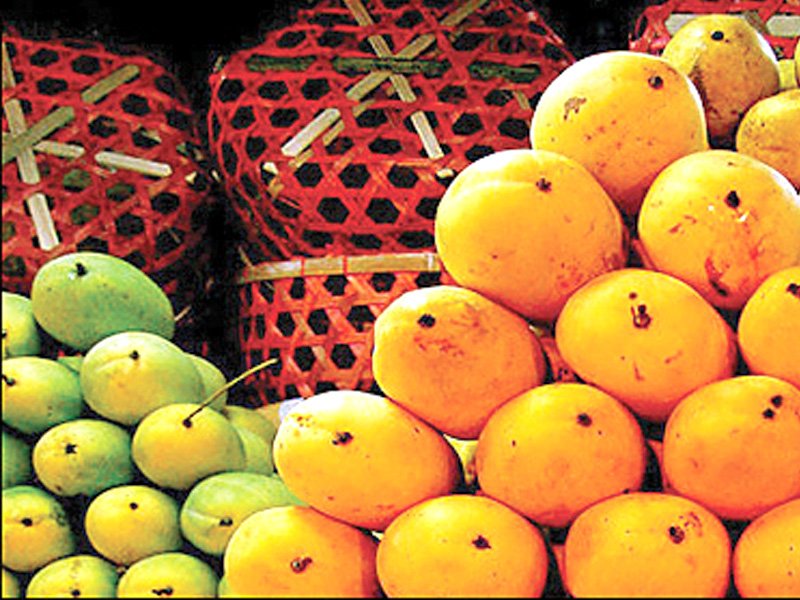
SUNEHRA
This variety of mango is oval in shape dark green in color until ripens. It is full of juice with heavy paste. This delicious variety comes around July and goes back till August.

LANGRA
This variety of mango is highly demanded in Europe in addition to Canada. Because it is a fibreless kind of fruit with fatty flesh. It is a little oval in shape and yellowish-brown in color. This kind remains in the market for two months.
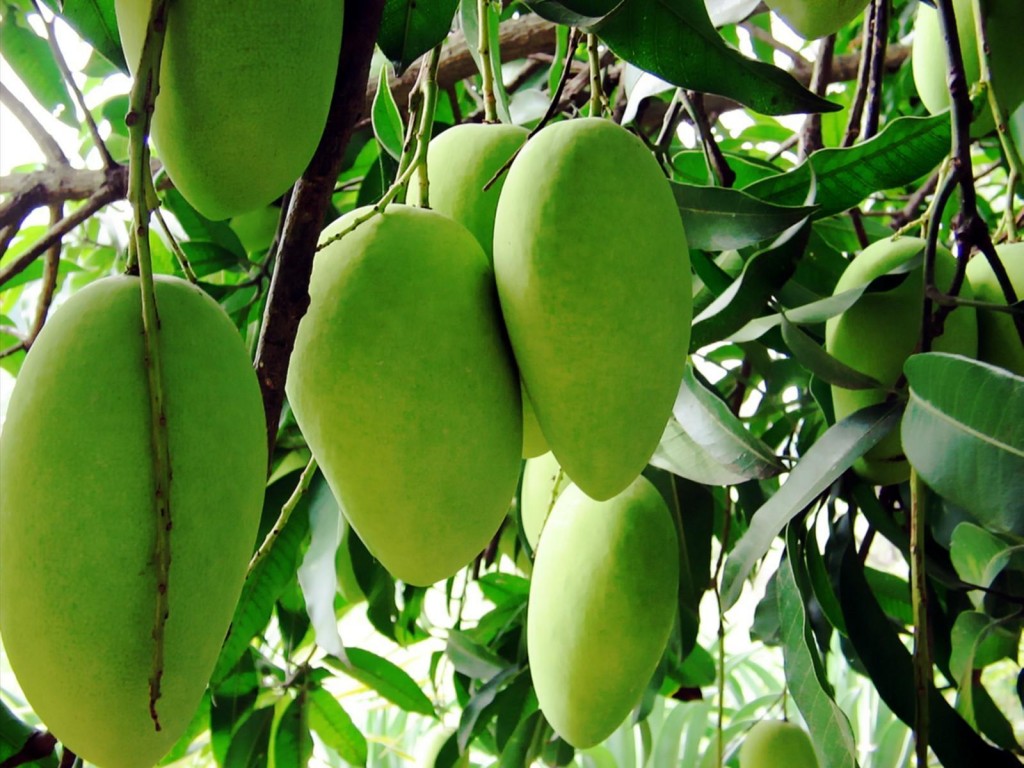
We are blessed with a land that can produce this much variety of mango fruits. So that we are always grateful to the Almighty. The only thing is we need to take good care of this land and we have to value its production.
Business
“Be Pakistani, Buy Pakistani” the spirit of Patriotism and Economic self-sufficiency.
Published
1 year agoon
May 14, 2024By
EDITOR
“Be Pakistani, Buy Pakistani” is a simple yet powerful slogan that promotes the idea of supporting locally made and produced products in Pakistan. It emphasizes the importance of choosing products that are manufactured within the country and encourages consumers to be conscious of their purchasing decisions. This slogan aligns with the principles of self-reliance, economic growth, and national development.
Promoting Local Industry
Supporting local products has a direct impact on the country’s economy. When people buy Pakistani products, it helps boost domestic industries, create jobs, and stimulate economic growth. This, in turn, strengthens the nation’s self-sufficiency and reduces its reliance on imported goods.
Quality and Diversity
Choosing local products doesn’t mean compromising on quality or variety. Pakistan boasts a wide range of industries that produce high-quality goods, from textiles and garments to electronics and food products. By buying Pakistani, consumers have access to a diverse range of quality products while contributing to their own country’s prosperity.
Sustainable Practices
Encouraging the “Be Pakistani, Buy Pakistani” mindset also supports sustainable and ethical business practices. Local industries are often subject to more stringent regulations and environmental standards, leading to cleaner and more sustainable manufacturing processes. By supporting local businesses, consumers indirectly promote eco-friendly and ethical production methods.
Cultural Preservation
Additionally, buying locally made products helps preserve and promote the country’s cultural heritage. Pakistan is known for its rich traditions and craftsmanship, which are reflected in various handcrafted goods and textiles. By choosing these items, consumers contribute to the preservation of cultural heritage and the livelihoods of artisans and craftsmen.
Community and National Unity
The “Be Pakistani, Buy Pakistani” slogan also fosters a sense of community and national unity. It encourages people to rally together in support of their nation’s industries and economy, reinforcing the idea that by working collectively, they can make a positive impact on their country’s future.
Conclusion
“Be Pakistani, Buy Pakistani” is a call to action that embodies the spirit of patriotism and economic self-sufficiency. It’s a reminder that every purchase we make can have a meaningful impact on our nation’s prosperity and development. By choosing Pakistani products, consumers can be active participants in building a stronger, more self-reliant Pakistan. This slogan serves as a testament to the power of individual choices in shaping a nation’s future.
Business
GB’s Dry Fruit – A potential source of revenue generation
Published
1 year agoon
May 14, 2024
Pakistan is bestowed with countless blessings of Nature right from its oceans, rivers, landscape, weathers, rich agricultural land and fruits much better in quality than other countries especially the dry fruit. But, lack of proper attention and marketing globally, this bounty of Nature could not get a deserving space in international markets resulting in loss of earning for the local people and precious foreign exchange for the country.
As Gilgit-Baltistan’s unique geography and climate provides the perfect conditions for growing an array of distinctive dry fruits like apricots, almonds, walnuts, cherries, Kilao and various types of berries, there is dire need to promote these distinct flavored and nutritionally rich products in world markets.
“We take great pride in our dry fruits, particularly apricots cherries and walnuts,” said Gul Baz a dry fruit farmer from Hunza. “These are not just a source of income; they are also a part of our culture and heritage. Dry fruit produced in Northern Areas is delicious and provide essential vitamins to human body.”
One of the standout features of Gilgit-Baltistan’s dry fruits is their exceptional nutritional value. They are packed with vitamins, minerals, and antioxidants, making them a healthy snack option. For example, apricots in this region are full of vitamin A and C content, while almonds and walnuts are a great source of protein and healthy fats.
“Dry fruits in Gilgit-Baltistan are nutritional powerhouses,” said Ayesha Ali, a nutritionist in Gilgit.
“These products are rich in vitamins essential for immune support, skin health, protein and healthy fats as well as weight management and health of human heart. People must include some quantity of dry fruits to their diet.”
While dry fruit production has been a traditional livelihood for the people of Gilgit-Baltistan, limited marketing exposure has hindered their economic potential. By establishing proper marketing channels, local communities can benefit from increased sales to improve their earning as well as collectively venture to alleviate poverty from the region.
Aleem Hussain a local marketing expert has recommended multifaceted approach to tap the potential of unique dry fruits of Gilgit Baltistan.
“First, we need investment in packaging and labeling to highlight our products and then establish strong partnerships with national and international distributors.”
Secondly, he said, “we should effectively participate in world food expos to market our products internationally and expand their market network. New tools like social media and e-marketing should be fully exploited to connect local farmers with a broader customer base, both nationally and internationally.”
Aleem Hussain said, many dry fruit producers in Gilgit-Baltistan follow sustainable farming practices, their dry fruit orchards are organic and use traditional irrigation methods in natural environment. “Highlighting these practices can also be helpful for fruitful marketing and attracting eco-conscious consumers.”
He said despite immense potential, Gilgit-Baltistan’s dry fruit industry faces challenges like limited infrastructure, lack of awareness and inadequate marketing strategies. “Addressing these challenges can be beneficial for both the country and the local people.”
To unlock the potential of Gilgit-Baltistan’s dry fruit industry, the government and non-governmental organizations (NGOs) can play a crucial role by providing financial support, technical assistance and marketing expertise to local farmers and cooperatives to establish a sustainable supply chain.
Proper marketing efforts to secure slots in international markets can pave for Gilgit-Baltistan’s unique dry fruits to become sought-after delicacies globally. Exporting to countries with a growing demand for healthy and exotic foods can also be a game-changer for the region’s economy.
Meanwhile, Fazul Rehman, Director Agriculture and Livestock Gilgit Baltistan has informed that the region produces over 3,000 metric tons dry apricots, 3,000 tons almonds and a staggering 100,000 tons walnuts annually.
“Notably, all fruits grown in GB are organic, with no pesticides used, contributing to their superior quality and nutritional value,” Fazul Rehman said. “The region’s farmers could potentially earn more than $20 million from export of dry fruits against the current earning of just an estimated Rs 50 million.”
He suggested to setting up cold storages, develop proper infrastructure to address issues like quality standards and certification and impart proper training to local farmers for maintaining international standards. “Since, dry fruit production in GB is seasonal therefore its production window may not align with global demand. This mismatch can lead to missed opportunities in international market.”
Like many other treasures under the earth, to say gold, cobalt, barite, dolomite and copper etc, the Gilgit-Baltistan’s presents treasure of unique dry fruits on the surface of earth. But, for the world nations, these are the hidden gems, waiting to be discovered.
Therefore, proper strategies, support and investment can make this region a potential global hub for high-quality dry fruits, benefiting producers and consumers alike. Moreover, being an agricultural country, when respective governments announce incentives for the small and big farmers and ensure subsidies and rebates to the exporters for exporting these cash crops, they should also keep the dry fruit producing potential of Northern Areas in their mind as cash crops and include it in national policies incentives to grow this sector for contribution in national prosperity.

The Chiltan Ibex: A Rare Treasure of Balochistan

MANGO HEALTH BENEFITS NUTRITION








